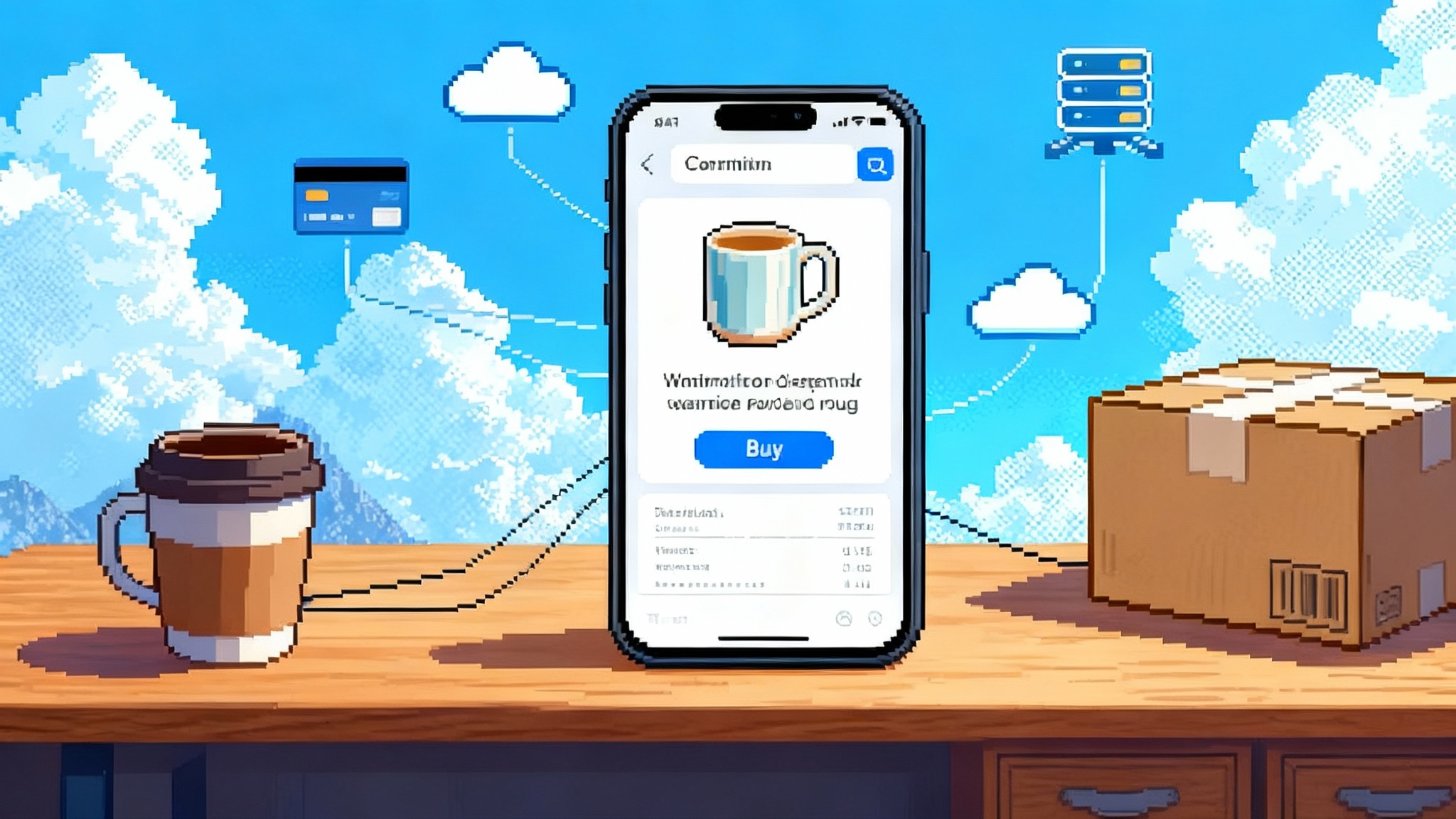Windows backs MCP and the moat shifts to identity
Windows 11 is adopting the Model Context Protocol, giving agents a universal port into apps and files. The next edge is not bigger models, but unified identity, consent, and short‑lived authorization that let agents act safely across desktops and clouds.

The week MCP went from niche to default
A quiet standard just became a big story. Microsoft said Windows 11 and its broader agent platform will support the Model Context Protocol, often described as USB‑C for AI tools. In one stroke, an idea born in open source is now wired into the most widely used desktop platform on earth. The company also joined the protocol’s steering efforts and previewed an authorization model and a registry design meant to make agents safer and easier to discover. That is not a press release you can ignore. It is a market signal that the way agents talk to software is consolidating around a simple, universal plug. See Microsoft’s Build recap for the specifics and the list of first party surfaces adopting MCP across Windows, GitHub, Copilot Studio, Dynamics, Azure, and Semantic Kernel, plus the Windows runtime hooks that make it real. Microsoft’s Build post on MCP support lays out the scope in plain language.
At the same time, security researchers have been publishing fresh results. They show how malicious or manipulated servers can steer agents toward dangerous actions, how lookalike tools can exfiltrate data, and how even well intentioned agents can chain authorized steps into harmful outcomes. The research is not a reason to retreat. It is a blueprint for what must be designed into the identity layer if MCP is going to scale safely.
Finally, the protocol team set a timeline for its next release, with a release candidate and a full spec on the calendar. The summer revision added OAuth based authorization, structured outputs, and elicitation for server initiated user prompts. The coming update puts governance and interoperability on stronger footing. The date on the calendar matters because it gives product teams a window to align roadmaps and to ship MCP aware agents with strong identity and policy from day one. The official update has the dates, the rationale, and the process. Read the roadmap in the protocol’s next version update.
Put these threads together and you get a simple takeaway. The next competitive edge for agents is not model size. It is unified identity, consent, and ephemeral authorization that travels with the agent as it moves across MCP servers. This shift mirrors broader platform moves we explored in meetings as agent operating systems.
A quick refresher: what MCP does and why it took off
Model Context Protocol is a way for an AI agent to talk to tools, data, and applications in a consistent way. Think of it like USB‑C for software capabilities. If a device speaks the plug, your laptop does not care who made the cable. It can charge, stream video, and transfer data through the same port. MCP gives agents a single port to call tools, fetch documents, write files, or kick off workflows. The spec describes transports, messages, tool descriptors, and a way to negotiate versions without vendor lock in.
When Windows bakes MCP into the platform, the default assumption flips. Today, an agent often needs a custom connector for Outlook, Teams, or your local file system. With MCP, those become standardized servers exposed by Windows and by apps you already use. That reduces integration cost and makes agent skills portable. It also increases the blast radius of mistakes. One unscoped token or one poorly described tool can suddenly reach a lot of things.
Why the moat is identity, not bigger models
Models are converging in quality for many tasks. The gap is narrowing as vendors ship frequent updates and distills. What will not converge by default is your ability to prove who an agent is, what it is allowed to do right now, and how to limit that permission to the smallest useful window across many servers.
Identity is the real moat because it compounds in three ways:
- It compounds with surface area. The more tools an agent can reach via MCP, the more valuable precise identity, consent, and policy become.
- It compounds with speed. Faster agents automate more work, which shortens the time window to catch misuse. Ephemeral credentials and real time policy checks become mandatory.
- It compounds with trust. Enterprises and consumers will only authorize cross app automation if they can see and recall who did what, when, where, and with which approval.
If you are building agent products, the thing to outcompete is not a rival’s benchmark. It is their identity fabric. For a deeper look at operational durability and oversight, see our notes on durable agents and auditability.
What unified identity across MCP enables
-
Trusted cross app agents on the desktop. Imagine an agent that drafts a document in Word, pulls the latest numbers from a finance folder, books a meeting in Outlook, and files the artifact in SharePoint, all while showing a single consent card that lists the exact servers, scopes, and time limits. Windows exposing common tasks via MCP means this flow is not a custom integration. It is a set of standard servers behind consistent consent.
-
Enterprise automation without standing privileges. Instead of handing a bot account a forever key to your customer relationship management system, your data lake, and your build system, you issue per task tokens bound to specific servers and resources. A deployment agent can request just in time access to a particular environment for fifteen minutes, with every call logged and reviewable.
-
Safer consumer plug ins. A password manager, a personal storage drive, and a calendar can all speak MCP. The agent asks to read one vault entry, write one file, and create one event for the next ten minutes. The user sees a single, explainable request. The keys evaporate after use. If a malicious server later tries to reuse a token, it fails. This is the consumer side of the ambient agent era insights.
These use cases depend on the same foundation: a consistent identity layer that spans MCP servers and governs consent, scoping, and expiry.
The risks if we get identity wrong
-
Identity fragmentation. If every MCP server has its own sign in, your agent ends up juggling tokens with different semantics, lifetimes, and policies. That leads to unfixable confusion about who is acting and on whose behalf.
-
Secret sprawl. Static keys in environment variables and configuration files will leak. In an MCP world, a single leaked key can federate abuse across tools.
-
Confused deputy and tool spoofing. Agents select tools from descriptions. A malicious server that looks useful can trick an agent into granting it broader access, then forward calls to sensitive servers to exfiltrate data. The more servers exist, the easier it is to hide malicious lookalikes.
-
Emergent misuse via legitimate steps. When an agent chains authorized but uncoordinated actions across several servers, it can produce harmful outcomes that no single server would have allowed on its own.
Each risk is surmountable if identity is designed as a first class surface, not an afterthought.
A practical blueprint to ship MCP aware agents with strong identity from day one
You can adopt this checklist without waiting for the next spec revision. Treat it like a reference plan for the first quarter of work.
-
Choose a root of trust and make it visible
- Pick one identity provider for both humans and agents, even if you will add federation later. This is your passport office. Everything else keys off it.
- Use the same identity for your development and staging environments, with clearly marked tenants or projects, so your policies and logs are consistent before production.
- Require strong authentication for developer actions that mint credentials, such as creating client registrations or approving new servers in your registry.
-
Bind tokens to a specific server and resource
- Implement OAuth 2.1 style flows for HTTP transports with Proof Key for Code Exchange and explicit redirect allowlists. Bind every access token to a single MCP server identity and scope it to one resource class or collection. If your identity system supports a resource parameter or audience restriction, use it.
- Prefer user present approvals for first time access and for elevation. Show the user the exact tool names, permissions, and time limit in a single consent surface.
-
Go ephemeral by default
- Issue short lived access tokens measured in minutes, not hours. Make refresh tokens one time and device bound where possible.
- Rotate keys for STDIO and local transports on each process start. Do not reuse the same environment secret across sessions.
- Compose multi server tasks from independent, per server grants so that a compromise of one token does not grant access elsewhere.
-
Centralize policy and make it declarative
- Define a policy model that expresses who can call which server, with which tools, on which resource patterns, for how long. Use allow by default inside sandboxes and deny by default at system boundaries.
- Enforce least privilege by limiting tool arguments. A file read tool should take a file handle or an approved path prefix, not an arbitrary glob.
- Add time and context limits. Allow destructive tools only during defined change windows, from known locations or machines.
-
Make logging a product surface, not a compliance artifact
- Log every authorization decision, tool call, argument, and result size. Tie each log line to a stable identity and a session identifier.
- Provide a human readable audit view inside your agent interface. Users should be able to click into a timeline that shows what the agent did and why it was allowed.
- Retain summaries long term, and raw logs for a shorter window with strict access control. Summaries make incident review possible without handling sensitive payloads.
-
Build a registry you can trust
- Maintain an internal registry of approved MCP servers with signed metadata that includes ownership, version, and security review status. Do not let agents auto discover arbitrary servers in production.
- For public registries, verify signatures and enforce pinning to trusted publishers. Alert on lookalike names and descriptions that resemble approved servers.
- Require attestation for servers that can reach sensitive systems. A server that drives a deployment pipeline should prove the provenance of its binary or container image.
-
Test like an adversary
- Seed your test suites with malicious server fixtures. Include lookalike names, oversized outputs, and payloads that request additional tools mid flow.
- Red team with attack chains that combine legitimate tools. For example, a sequence that exports a customer report, compresses it, uploads to a personal drive, then posts a link in a chat. Your policies and consents should block steps that cross sensitive boundaries without fresh approval.
- Evaluate model level defenses, but never rely on them alone. If a server is allowed to read a file, prompt safety will not save you from an exfiltration tool.
-
Draw the consent surface with care
- Collapse multiple tool requests into one readable consent that lists the servers, scopes, and time limits. Show plain language about what will happen.
- Provide a cancel path and a way to narrow scope. If a user declines access to the whole drive, offer to select a folder.
- Make revocation instant. A kill switch should invalidate tokens and stop running tasks, not simply mark them for cleanup.
-
Instrument the platform
- Use the Windows hooks that expose file system, application, and subsystem actions through MCP in a controlled way. Favor system provided servers over third party ones for core tasks, because they inherit platform level protections.
- On the client side, surface a system tray indicator when an agent has active privileges and show countdown timers for expiring grants.
- On the server side, publish capability descriptors that are honest about risk. Mark destructive tools as such and require elevation to reach them.
-
Write your incident playbook before you need it
- Define what happens when a token leaks, when a malicious server is discovered, or when a user reports an unexpected action.
- Pre stage revocation and rotation scripts. Practice them during a game day.
- Decide and document who has authority to flip the kill switch for a tenant or for an entire region.
How Windows changes the design conversation
Historically, agent teams could get away with hand waving identity because their integrations were narrow. A bespoke connector to one file system or one calendar did not require an identity strategy that would scale. Once Windows and major developer tools expose actions through MCP, your agent can reach email, files, browser automation, package managers, and build tools through the same pipe. That is a gift and a test. The gift is that you no longer need to invent your own connectors. The test is that you must design identity as a platform, not as per tool patches.
Expect a few near term patterns to emerge:
- Vendors will compete on consent design and audit clarity. The first wave of agent products will win by making permissions and logs as understandable as a credit card statement.
- The best enterprise rollouts will abolish standing agent privileges. Just in time authorization will become a selling point in requests for proposals.
- Registries will matter. A curated catalog of servers with signed metadata and attestation will be as important as an application store was for mobile.
- Tool descriptors will get richer. Servers will describe whether a tool is read only, destructive, or privacy sensitive, and clients will use that to drive policy decisions and consents.
What to ship in the next 90 days
If you have an agent in flight, here is a concrete work plan you can commit to this quarter.
- Define a single sign on authority for agents and humans. Register your agent clients and enable device bound tokens with short lifetimes.
- Implement the HTTP transport with OAuth 2.1 style flows and Proof Key for Code Exchange. Bind every token to a server identity and resource scope. For local transports, rotate secrets per process.
- Add a consent service that merges multiple tool requests into one approval. Show servers, scopes, and time limits. Require an extra step for destructive tools.
- Ship audit views inside your product. Include a session timeline with explicit identities, inputs, and outputs. Add exportable compliance summaries.
- Build an allowlist registry seeded with the Windows provided servers and your own internal ones. Enforce digital signatures and pinning.
- Add at least ten red team scenarios to your test suite, including lookalike servers, overscoped tokens, and multi server exfiltration chains. Track and fix every failure.
- Run a staged rollout where every privileged action by the agent is gated by ephemeral authorization. Measure the delta in incident rates.
The forward case
Standards rarely win because they are perfect. They win because they make the next obvious thing easy. MCP makes it easy for agents to talk to tools on Windows and across clouds. That will increase the number of tools agents can reach, which increases both value and risk. The way to capture the value without drowning in the risk is to treat identity, consent, and ephemeral authorization as your product, not as plumbing.
The teams that see this early will turn identity into delight. Their consent flows will feel like a clear, fair checkout page rather than a wall of warnings. Their logs will tell the story of what happened at a glance. Their tokens will appear just in time and vanish on cue. The result will be trusted cross app assistants on the desktop, enterprise automations that can pass a real audit, and consumer plug ins that parents and administrators will allow.
Model size will still matter. But it will not be the moat. The moat will be the identity layer that lets agents act on your behalf across MCP servers with clarity, restraint, and speed. The news this week makes that future feel near. The teams that start building it now will own it when it arrives.






